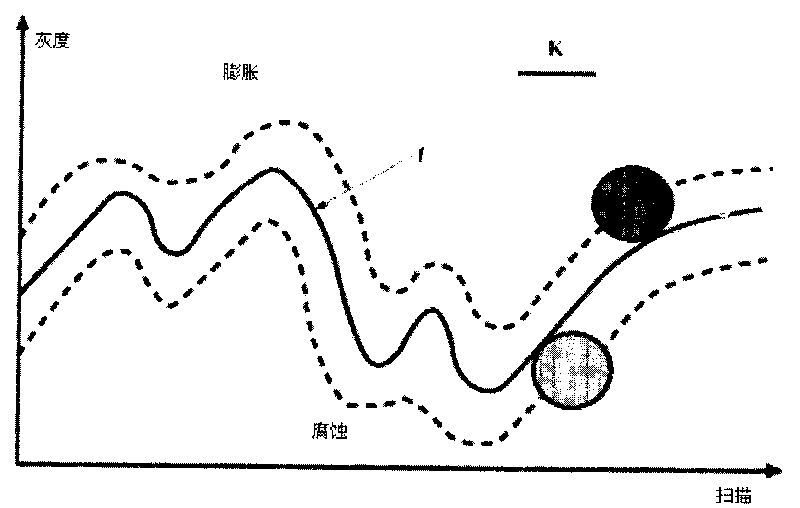Morphology based method for separating cells
A technology based on morphology and separation method, which is applied in the field of cell single cell image segmentation, can solve the problems of ineffective separation of adherent cells and affect the calculation of cell morphological parameters, etc., and achieve the effect of effective separation
- Summary
- Abstract
- Description
- Claims
- Application Information
AI Technical Summary
Problems solved by technology
Method used
Image
Examples
Embodiment Construction
[0050] The present invention will be further described below in conjunction with the accompanying drawings.
[0051] refer to Figure 1 to Figure 11 , a cell separation method based on morphology, the cell separation method comprises the following steps:
[0052] 1), area mark:
[0053] For the binary image of the cell image segmentation result, the morphological markers are as follows:
[0054] e) Custom structural elements, including shape and size;
[0055] f) use the structural element to corrode the binary image to obtain the internal representative area;
[0056] g) Morphological finishing operation and filling method to eliminate small noise areas, and construct a new binary image containing internal representative areas;
[0057] h) Obtain the marker values of each region with the watershed algorithm on the new binary map;
[0058] Obtain the mark value of each adhesion area through the above marks;
[0059] 2), extract single cells:
[0060] 2.1), the process...
PUM
 Login to View More
Login to View More Abstract
Description
Claims
Application Information
 Login to View More
Login to View More - R&D
- Intellectual Property
- Life Sciences
- Materials
- Tech Scout
- Unparalleled Data Quality
- Higher Quality Content
- 60% Fewer Hallucinations
Browse by: Latest US Patents, China's latest patents, Technical Efficacy Thesaurus, Application Domain, Technology Topic, Popular Technical Reports.
© 2025 PatSnap. All rights reserved.Legal|Privacy policy|Modern Slavery Act Transparency Statement|Sitemap|About US| Contact US: help@patsnap.com



